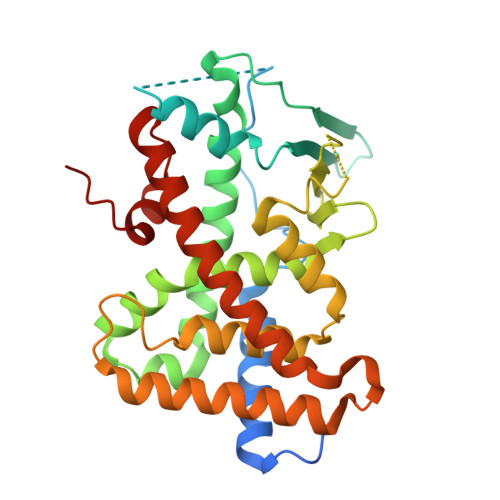Structure-Based and Knowledge-Informed Design of B-Raf Inhibitors Devoid of Deleterious PXR Binding.
Schneider, M., Delfosse, V., Gelin, M., Grimaldi, M., Granell, M., Heriaud, L., Pons, J.L., Cohen Gonsaud, M., Balaguer, P., Bourguet, W., Labesse, G.(2022) J Med Chem 65: 1552-1566
- PubMed: 34958586
- DOI: https://doi.org/10.1021/acs.jmedchem.1c01354
- Primary Citation of Related Structures:
6HJ2, 7P3V - PubMed Abstract:
Dabrafenib is an anticancer drug currently used in the clinics, alone or in combination. However, dabrafenib was recently shown to potently activate the human nuclear receptor pregnane X receptor (PXR). PXR activation increases the clearance of various chemicals and drugs, including dabrafenib itself. It may also enhance cell proliferation and tumor aggressiveness. Therefore, there is a need for rational design of a potent protein kinase B-Raf inhibitor devoid of binding to the secondary target PXR and resisting rapid metabolism. By determining the crystal structure of dabrafenib bound to PXR and analyzing its mode of binding to both PXR and its primary target, B-Raf-V600E, we were able to derive new compounds with nanomolar activity against B-Raf and no detectable affinity for PXR. The crystal structure of B-Raf in complex with our lead compound revealed a subdomain swapping of the activation loop with potentially important functional implications for a prolonged inhibition of B-Raf-V600E.
Organizational Affiliation:
Centre de Biologie Structurale (CBS), CNRS, INSERM, Univ Montpellier, F-34090 Montpellier, France.
















